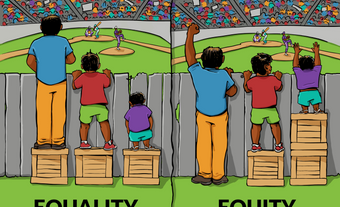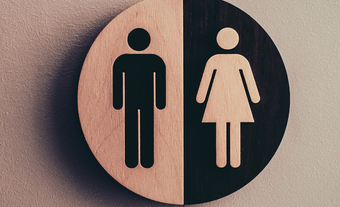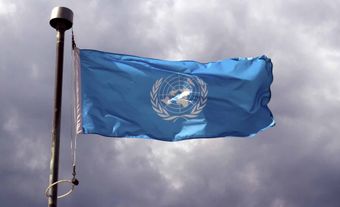In June 2017, Justin Trudeau’s Liberal government introduced its Feminist International
Assistance Policy (FIAP). The FIAP takes an explicitly feminist approach to Canada’s foreign policy and international development to target gender equality and the
empowerment of women and girls. (See Global Affairs Canada.)

Canada's Feminist International Assistance Policy
Photo: Government of Canada
Background
Canada’s focus on women and girls within global governance and international development sectors is longstanding. Examples include Canada’s involvement in the 1979 United Nations Convention on the Elimination of All Forms of Discrimination against Women (CEDAW), the Beijing Declaration and Platform for Action conceived at the 1995 UN Conference on Women, and two National Action plans on Women, Peace and Security.
Feminism and Justin Trudeau’s Liberal Government
During the 2015 federal campaign, Justin Trudeau made feminism a centerpiece of the Liberal platform. After his party’s election, Trudeau fulfilled his electoral promises of naming the first gender-parity cabinet in Canada’s history and launching a national inquiry into Missing and Murdered Indigenous Women and Girls (MMIWG).
In 2017, his government introduced a strategy to prevent and address gender-based violence. In 2018, it transformed Status of Women Canada into a federal department named Women and Gender Equality Canada (WAGE) and adopted new pay equity legislation. On the international stage, the Liberals emphasized their feminist agenda by convening the first ever G7 Gender Equality council in 2018, and promising more funding to sexual and reproductive health worldwide after US president Donald Trump reinstated and expanded the Global Gag Rule, which bars overseas groups from US funding if they support or mention abortion (see Canadian-American Relations).
However, the Trudeau government has been criticized for not living up to its feminist commitments. For example, several Indigenous groups argued that the MMIWG commission lacked transparency, communication and inclusivity (see Missing and Murdered Indigenous Women and Girls in Canada). During the SNC-Lavalin affair, Trudeau’s heavy-handed treatment of Canada’s first Indigenous justice minister Jodie Wilson-Raybould tarnished his feminist image (see also Jane Philpott).
Canada’s Feminist International Assistance Policy (FIAP) Report
Published in 2017 by the Government of Canada, with forewords from then Foreign Affairs Minister Chrystia Freeland and International Development and La Francophonie Minister Marie-Claude Bibeau, the FIAP report is based on consultations with more than 15,000 people in 65 countries. It contains priority areas and concrete examples of policy actions.
Global Affairs Canada emphasises the innovative character of the policy. The report acknowledges that the empowerment of women and girls will require the transformation of power relations and social norms. The engagement of men and boys is included in the strategy, noting that “social norms and gender stereotypes also limit men and boys in their societal and family roles”.
The FIAP is centered around one core action area: gender equality and the empowerment of women and girls. The other five action areas are: human dignity; growth that works for everyone; environment and climate action; inclusive governance; and peace and security. Another goal of the FIAP is to help Canada achieve the United Nations’ Sustainable Development Goals (SDGs), “which aim to eradicate poverty by 2030” and to better align Canada’s policy efforts with “the Paris Agreement on climate change, which seeks to reduce greenhouse gas emissions and protect the environment.”
The policy commits Canada to becoming a feminist donor by guaranteeing that 15 per cent of all bilateral international development assistance investment target gender equality and empowerment. By 2022, at least 95 per cent of Canada’s foreign assistance will focus on equality and empowerment.
The FIAP does not pre-target the countries Canada will assist. Sub-Saharan Africa is slated to receive no less than 50 per cent of the funding, but the focus is on fragile and conflict-affected countries more generally. To guarantee maximum impact, the policy also insists on the need for flexibility and innovation, including closer collaboration with the private sector and civil society organizations. $150 million is earmarked for local women’s organizations and movements.
Did you know? Canada was the second country in the world to take an explicitly feminist approach to foreign policy and development. Sweden was the first country to do so, in 2014.
Criticism
While celebrated by some as a progressive approach to foreign policy, the FIAP has also drawn some criticism. For example, some question an approach wherein gender equality is regarded not as an end in and of itself, but as the answer to other problems, such as economic growth or reducing poverty. Some also criticize the business-centric approach in which the empowerment of women and girls is seen as way to make countries more economically prosperous, in part because it serves the self-interest of the donor state.
Another criticism relates to the complexity of transforming gender norms and stereotypes. While the FIAP advocates for gender issues such as greater economic opportunity for women, there is no evidence that it changes traditional gender roles and relations. In some contexts where traditional ideas about men and women are strong, the policy may do more harm to women and girls, especially when the demand for social and cultural change is imposed by a donor country. Furthermore, the FIAP does not provide concrete project long-term impact measurements, or indicators of successes and failures.
Some have also flagged the incoherence between the policy’s feminist rhetoric and certain actions taken by the Trudeau government. For example, while claiming to be feminist and running on a platform of respect for women’s rights, the Liberals continued to sell light armored vehicles to the government of Saudi Arabia, a regime well-known for committing human rights violations, particularly regarding women’s rights and gender equality.
A final criticism regards the limited financial resources allotted to the FIAP. In 2017, only 0.26 per cent of Canada’s GDI was dedicated to foreign aid and despite a slight increase in 2018–19, it remained limited compared to other Western countries and G7 members. In other words, critics argue that the funding provided does not match the policy’s ambitions.

 Share on Facebook
Share on Facebook Share on X
Share on X Share by Email
Share by Email Share on Google Classroom
Share on Google Classroom




